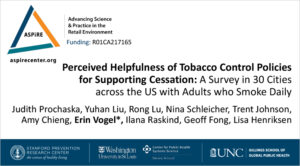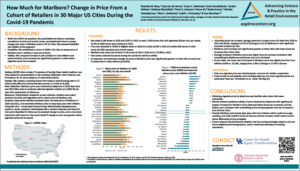Project overview
Led by a team at Stanford University, this project seeks to understand how the tobacco retail environment in a city may impede efforts to quit smoking. The study evaluates the benefits of local policies to regulate and limit the retail availability of tobacco. Researchers are surveying a group of 2,400 adult smokers 5 times over 30 months and examine changes over time.
What’s New

Check out our new Tobacco Retailer Mapping study. Our Stanford team mapped tobacco retailers in the 30 cities represented on our ASPiRE Community Advisory Board. We developed tailored Tobacco Retailer Density Fact Sheets and “Tobacco Swamps” Maps to provide each city with usable snapshots of its tobacco retail environment. Use these resources, along with shareable social graphics and press releases, to support the increasing number of local tobacco control interventions that address the retail environment.
Co-Leaders


Lisa Henriksen and Jodi Prochaska
“This is a collaborative effort with local tobacco control programs in 30 large cities, home to 1 in 6 U.S. residents. Our partners at the Public Health Law Center and the University of Kentucky Center for Health Equity Transformation will help us document how local policies change and identify their impact on retail availability and tobacco use, particularly menthol and other flavored products use in lower-income neighborhoods.” — Lisa Henriksen


